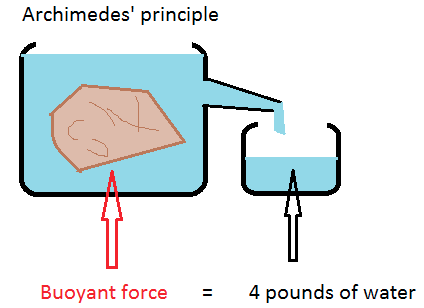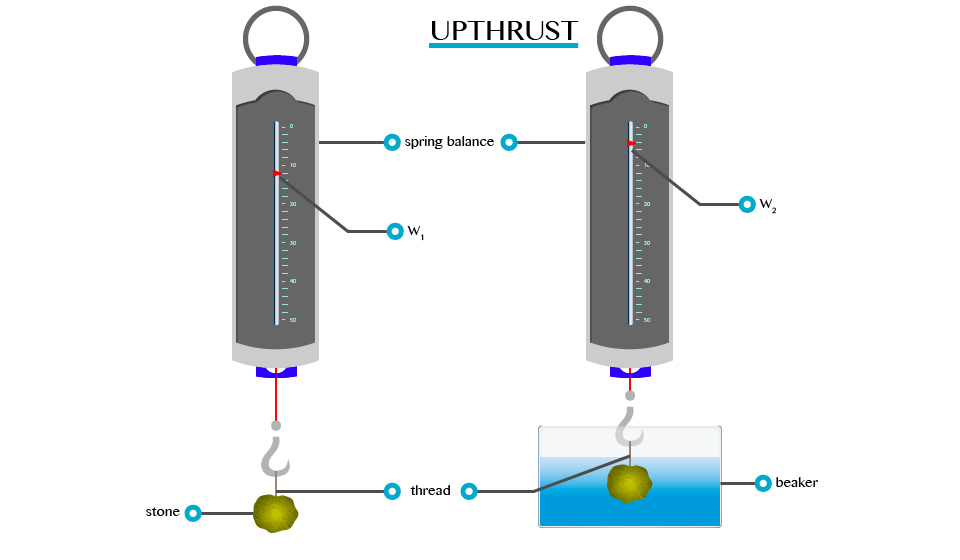
If you would like to know how large needs to be a ship to carry only you and nothing else you need to use Archimedes principle. This way you can explain both why ships float and why balloons filled with hot air or helium rise. The beauty of the Archimedes’ principle is that it works perfectly for most of the fluids and gases. The weight Ff can be written in terms of the density (p) of the fluid as Ff = pVg, where V is the volume of the fluid that has been displaced and g is 9.8 metres per second per second, the value of the acceleration from Earth’s gravity. The buoyancy force (Fb) is equal to the weight (Ff) of the fluid that a body in that fluid displaces. Weight of displaced fluid = weight of the object in vacuum – weight of object in fluid Equation #2 – If we would like to calculate a buoyancy force Equation #1 – If we would like to calculate how much weight an object lost when placed in a given fluid

There can be different variations of equation dependently on what do we need to calculate. The volume of displaced fluid is equivalent to the volume of an object fully immersed in a fluid or to that fraction of the volume below the surface for an object partially submerged in a liquid. Definition #3 of Archimedes Principle based on BritannicaĪrchimedes’ principle, physical law of buoyancy, discovered by the ancient Greek mathematician and inventor Archimedes, stating that any body completely or partially submerged in a fluid (gas or liquid) at rest is acted upon by an upward, or buoyant, force the magnitude of which is equal to the weight of the fluid displaced by the body. It was formulated by Archimedes of Syracuse. Archimedes’ principle is a law of physics fundamental to fluid mechanics.

250 BC) Definition #2 of Archimedes Principle based on WikipediaĪrchimedes’ principle states that the upward buoyant force that is exerted on a body immersed in a fluid, whether fully or partially submerged, is equal to the weight of the fluid that the body displaces. In On Floating Objects, Archimedes suggested (ca. Definition #1 of Archimedes Principle based on Archimedes himselfĪny object, totally or partially immersed in a fluid or liquid, is buoyed up by a force equal to the weight of the fluid displaced by the object. To be fair I will present three explanations based on three different sources: Original Archimedes Notes, Wikipedia and Encyclopedia Britannica.

Let us consider another example, where we drop a 5 kg rock into a cylindrical container with a base surface area of 700 cm 2. It will also show the buoyant force acting on the rock as 1.96 N and a message whether the rock will float or sink. The Archimedes' principle calculator will display the density of the rock as 2.70 g/cm 3 and the volume of the rock as 200 cm 3. You can also enter the density of the fluid manually. Using the drop-down menu, choose fluid type as water. We will calculate the average density of this rock as follows:Įnter the true mass and the apparent mass of the rock as 540 g and 340 g in the respective fields. Let the true mass (mass in the air) and apparent mass (when immersed in water) of a rock be 540 g and 340 g, respectively.

In this section, we will try to determine the density of an unknown object using our Archimedes' principle calculator.


 0 kommentar(er)
0 kommentar(er)
